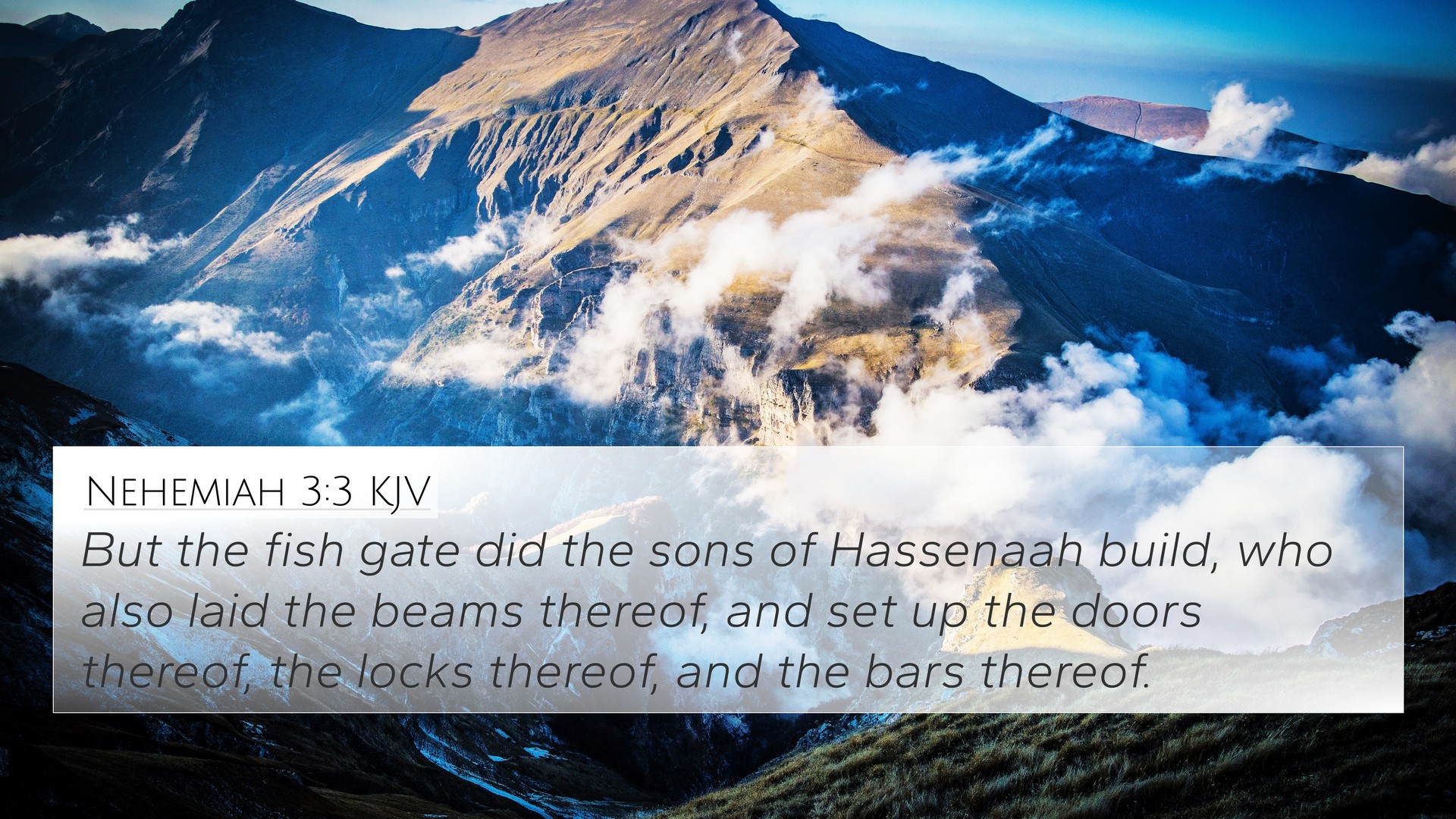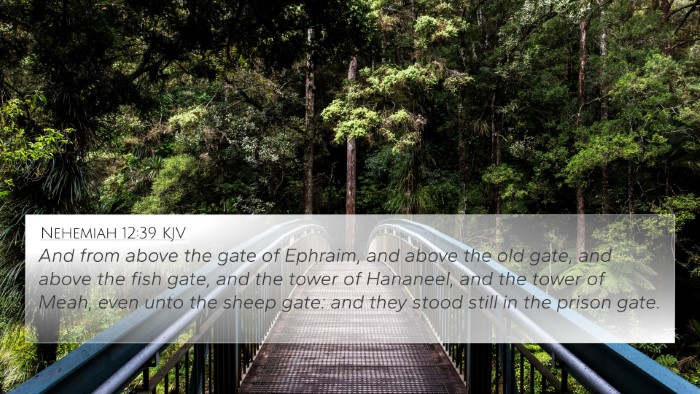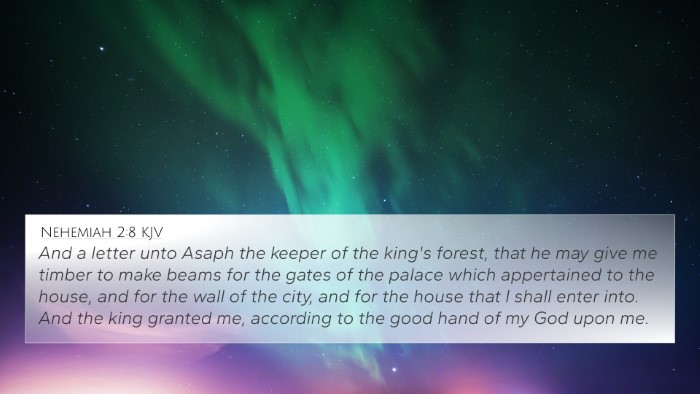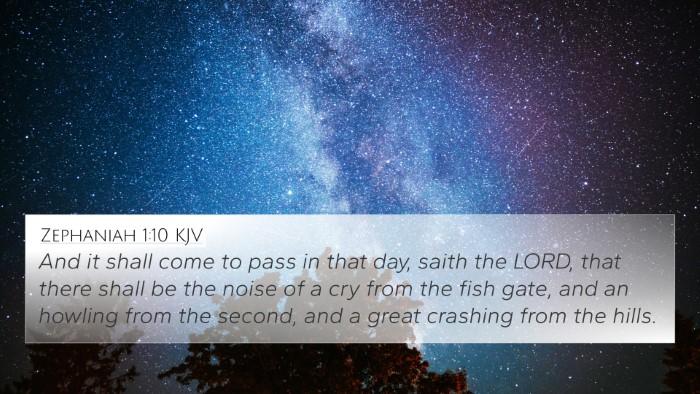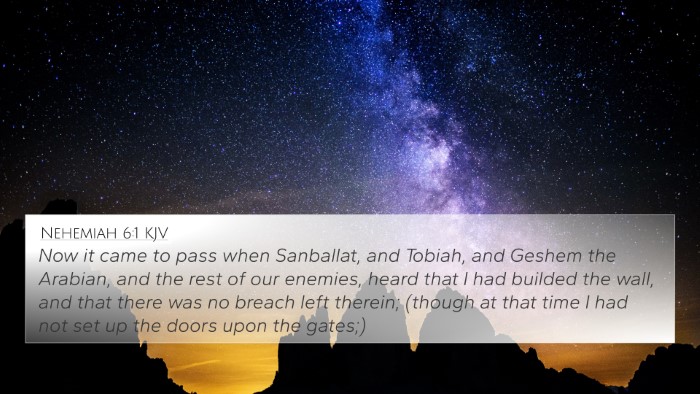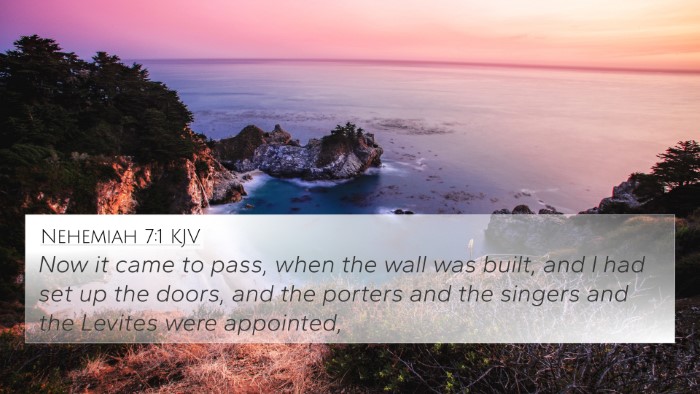Understanding Nehemiah 3:3
Verse Context: Nehemiah 3:3 reads, "But the fish gate did the sons of Hassenaah build, who also laid the beams thereof, and set up the doors thereof, the locks thereof, and the bars thereof."
Summary of Meaning: Nehemiah 3:3 is part of a larger narrative detailing the reconstruction of the walls of Jerusalem. This particular verse highlights the collective effort of the community in rebuilding the fish gate, signifying both physical and spiritual restoration in the face of adversity. Various public domain commentaries shed light on the significance of this effort, illustrating themes of community involvement, divine provision, and the importance of leadership. Below is an organized synthesis of insights from Matthew Henry, Albert Barnes, and Adam Clarke.
Insights from Commentaries
Matthew Henry:
Henry emphasizes the collaborative nature of the work, demonstrating how community efforts are essential in fulfilling God's mandates. He notes that the fish gate represents a strategic point for commerce and security in Jerusalem, symbolizing the restoration of the nation's vitality.
Albert Barnes:
Barnes points out that the mention of specific families involved in the rebuilding illustrates the personal investment of individuals in the restoration project. Each family’s role signifies the importance of active participation in fulfilling communal goals and responsibilities.
Adam Clarke:
Clarke discusses the historical significance of the fish gate, noting its relevance to trade and economy. The rebuilding of the gate not only represents physical restoration but also serves as a metaphor for spiritual reawakening among the people of Israel, showcasing God's hand in their endeavors.
Bible Cross-References
This verse connects with several other biblical passages that highlight themes of rebuilding, community, and divine assistance. Here are some significant cross-references:
- Ezra 3:10-11 - The early efforts to rebuild the temple in Jerusalem demonstrate the importance of communal worship and dedication to God.
- Nehemiah 2:18 - Nehemiah encourages the people to join in the work, showcasing leadership and initiative.
- Isaiah 58:12 - The prophecy speaks about rebuilding the ancient ruins, linking restoration with community welfare.
- Jeremiah 29:7 - God commands the exiles to seek the peace of the city, emphasizing the necessity of community involvement.
- Acts 4:32 - The early Church exhibited a unified spirit, sharing resources for the common good, similar to the community in Nehemiah's time.
- 1 Corinthians 12:12-27 - The body of Christ analogy emphasizes every member's unique role in the community, paralleling the work of Nehemiah’s builders.
- Philippians 2:2 - The call for unity among believers mirrors the collective effort of the Israelites in rebuilding Jerusalem.
- Hebrews 11:10 - Refers to the city of God that Abraham looked forward to, linking faith with the anticipation of restoration.
- Psalms 147:2 - Highlights God's role in gathering and rebuilding His people, resonating with the efforts in Nehemiah's narrative.
- Revelation 21:2 - The vision of a new Jerusalem reflects the ultimate restoration promise of God’s people.
Connections Between Bible Verses
Nehemiah 3:3 serves as an excellent example of how different scriptural texts interconnect through themes of restoration and community effort. Each of the cross-referenced passages enhances understanding of Nehemiah’s context, revealing deeper insights into God’s plan for His people.
- Collaborative Efforts: Many passages emphasize the significance of individuals working together in God’s will (e.g., 1 Corinthians 12:12-27).
- Divine Assurance: God's promise of restoration resonates throughout both the Old and New Testaments, providing hope and invoking action among His followers (e.g., Jeremiah 29:7).
- Community Investment: Scriptures such as Acts 4:32 showcase how early Christians mirrored the communal focus seen in Nehemiah’s time.
- Leadership and Vision: Nehemiah’s leadership role parallels that of leaders in other instances throughout scripture, demonstrating courage and commitment (e.g., Ezra 3:10-11).
Tools for Bible Cross-Referencing
For individuals interested in exploring cross-references in the Bible, there are several tools and methods available, aiding in a deeper understanding of biblical texts:
- Bible Concordance: Useful for finding specific words and their occurrences across scriptures.
- Bible Cross-Reference Guide: A compilation of related verses providing a helpful pathway through thematic studies.
- Cross-Reference Bible Study: Techniques for linking verses that share themes or teachings.
- Comprehensive Bible Cross-Reference Materials: Available in many formats, including online resources and printed guides, to facilitate cross-referencing.
Understanding Biblical Themes through Cross-References
Identifying connections between Old and New Testament scriptures can lead to enlightening insights on various themes. Through scriptural cross-referencing, believers can:
- Draw similarities between passages that support common theological ideas (e.g., restoration in Isaiah and Nehemiah).
- Explore detailed cross-references between Gospels, revealing cohesive narratives about Jesus' teachings related to community and service.
- Investigate links between Prophets and Apostolic letters to understand how God’s promises are fulfilled over time.
Conclusion
Nehemiah 3:3 encapsulates the communal spirit of restoration that God desires for His people, emphasizing the importance of shared work, collective faith, and the overwhelming significance of divine guidance. The connections found in scripture not only enrich the understanding of this verse but also highlight the overarching narrative of redemption and unity woven throughout the Bible. As one explores these scriptures through cross-referencing, the theological depth and encouragement found in the Scriptures unfold further, inviting deeper engagement and exploration of God's word.
